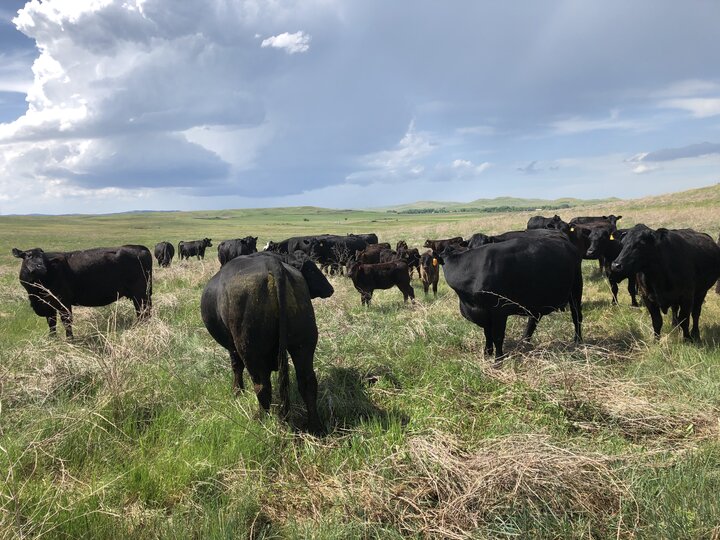Spring sale season in the Great Plains is in full swing. This is when seedstock producers get to showcase their program's progeny, and buyers can acquire bull power for the upcoming breeding season. The primary purpose of buying bulls is to improve herd genetics through an outside seedstock producers’ breeding program. Since nearly all herd improvements over time are a deliberate effort through purchased bulls or modern technologies such as artificial insemination, genetics are instilled in a herd through new bulls. Proper selection of bulls is a paramount decision for cow-calf operators.
Finding the correct bull is the quickest way to improve a commercial herd. The process of purchasing a new bull should begin prior to pulling a trailer to a local sale and picking through the catalog while eating the provided meal. It requires a systematic approach to identify genetic priorities that will enhance genetic progress within the herd. Following are factors that should be considered when selecting the next sire.
- Begin with the end in mind by establishing specific production goals and select sires that complement the needs of your cow herd and work toward meeting your personal marketing goals.
- Do your homework to evaluate Expected Progeny Differences (EPD) performance pedigrees and data.
- Never purchase a bull without a breeding soundness exam (BSE) or knowing the terms and conditions of purchasing a sire. (ex. Seller retains part interest in bull)
- Sires that increase fertility, number of calves born alive, add growth while improving the maternal strength of cows should be considered a sound investment.
Do NOT hone in on one specific trait or EPD. Remain cognizant of a wide variety of production traits to be successful in marketing weaned calves or retaining through finishing. Traits such as milk, carcass, birth, weaning, and yearling weight should be prioritized to a specific marketing program, but it is important to remember that adding too much of one trait can negatively affect other traits. A couple of examples of this would be pushing terminal traits and decreasing fertility and structural soundness or focusing on breeding low birth weight calves that then lack growth through maturity and their terminal end point.
My grandfather always said, “Quality remains long after the price is forgotten,” and this should be a consideration when purchasing bulls. An inexpensive bull that does not excel in specific traits of importance and is purchased with the sole purpose of getting cows bred likely will not make your herd more profitable. However, over-spending on a bull that will not return profit is just as counterproductive. Therefore, it is important to find a middle ground on purchasing bulls that will return profit while meeting your needs as a sire.
For more information on sire selection reach me at my office (402)624-8007 or my programming website bigredbeeftalk.unl.edu for more information on Nebraska Beef Extension.
Topics covered:
Genetics & selection, Cattle health & BQA, Reproduction & genetics

